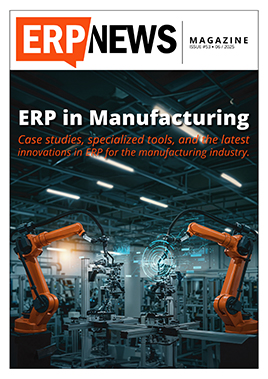Enterprise Resource Planning (ERP) is an integrated software solution that allows businesses to improve processes relating to planning, distribution, finance, marketing, human resources and more. With an ERP system in place, businesses can make more effective decisions based on real-time analytics, reduce waste and redundant tasks and improve the efficiency for better results using fewer resources. In short, ERP is a personalized software solution to integrate and streamline all business processes. It’s little wonder that the market is growing at an exponential rate as more companies look to utilize ERP to enhance their operations.
Projected Value of the ERP Market
According to a report by MarketResearchEngine.com, the global ERP market is expected to exceed $49 billion by 2020. The report provides an overview of the ERP and related technology markets, analysis global trends and presents the figure using data and projections.
In a more conservative estimate, ResearchandMarkets.com predict that the ERP market will be worth $41.04 billion by 2020, with a CAGR growth rate of 6.9% from 2015 to 2020. Allied Market Research also offers a similar projection of $41.9 billion, with a 7.2% growth rate.
Even if we take the more conservative estimates of around $41 billion, we can see that the ERP market is currently on the rise in an impressive way. To put the industry value into perspective, the global online gambling sector was worth around $37.91 billion worldwide in 2015 but is projected to be worth $57.79 billion by 2020.
Soon, the ERP market will be worth nearly as much as the online gambling market. So, what is the reason for this exponential increase?
Why is the ERP Market Growing?
The expected market growth is occurring for many reasons. To put it simply, businesses are benefiting from ERP solutions in a big way, saving time and making more money as a result of certain market forces that are responsible for the projected market growth of ERP. They include:
- A need for more intelligent and streamlined business processes
- The requirement for businesses to achieve more operational efficiency
- A growing demand from small, and especially medium-size businesses for ERP solutions that can drive them forward
- An increasing acceptance of mobile and cloud-based services, opening doors for more flexible, lower investment opportunities for SaaS
Restraining Factors for Market Growth
A decent financial projection looks not only at the reasons for growth but also the restraining factors that could prevent or stunt growth. Every industry has these restraining factors.
Let’s look at the online gambling market again. Of the $57 billion expected by 2020, reports suggest that only around $4 billion of this will come from the USA. This is because the USA has stringent legislation in many states, with New Jersey being one of the exceptions. Sites like 888 Casino offer New Jersey players the chance to play casino games for real money. Nevertheless, the federal laws in operation in the USA are a great example of restraining market forces.
For the enterprise resource planning industry, these restraining factors include the cost of customization of an ERP system for individual businesses, the cost of upgrading an ERP system, the difficulties in integrating several ERP systems into one “master” system and the lack of use of ERP solutions for very small businesses. Despite restraining factors, the ERP market has a promising future. And with all the projections mentioned here, the ERP industry is looking at a global industry worth over $40 billion by 2020.






